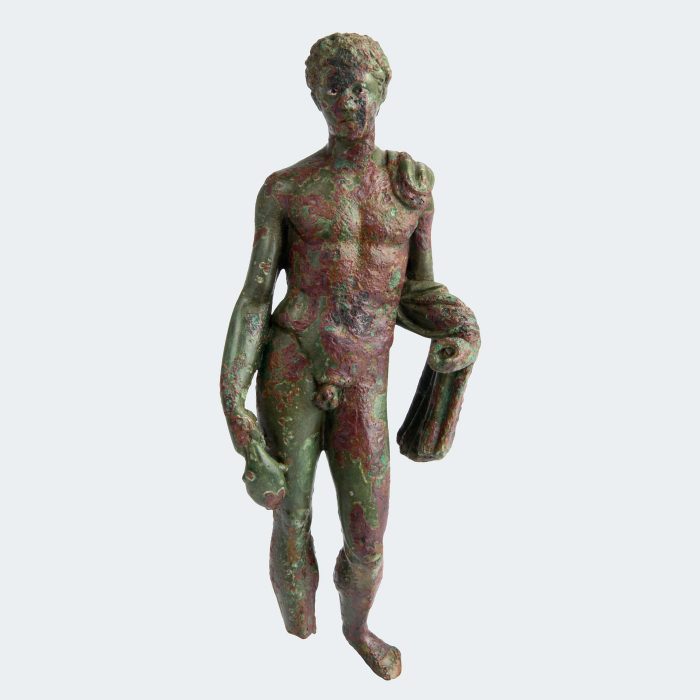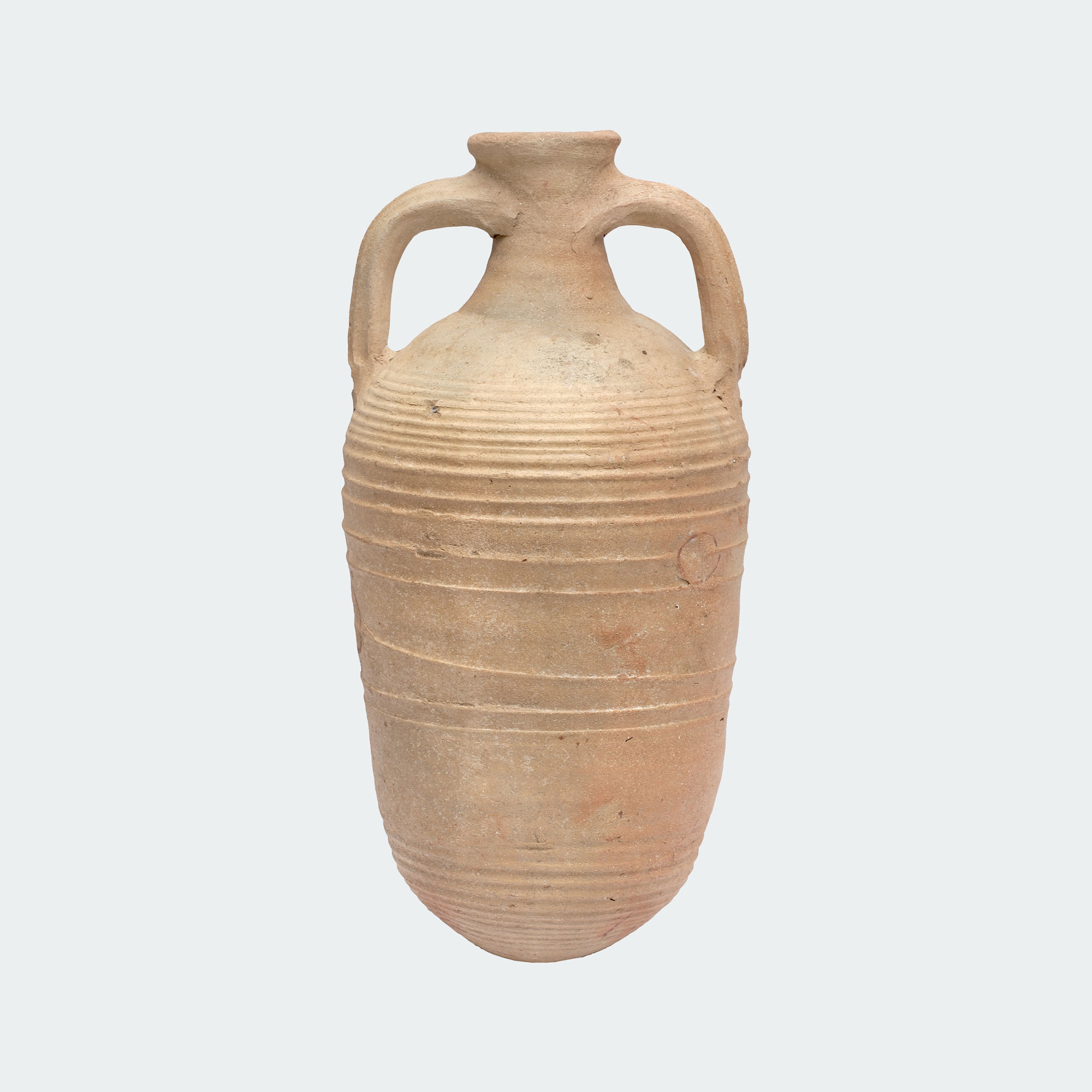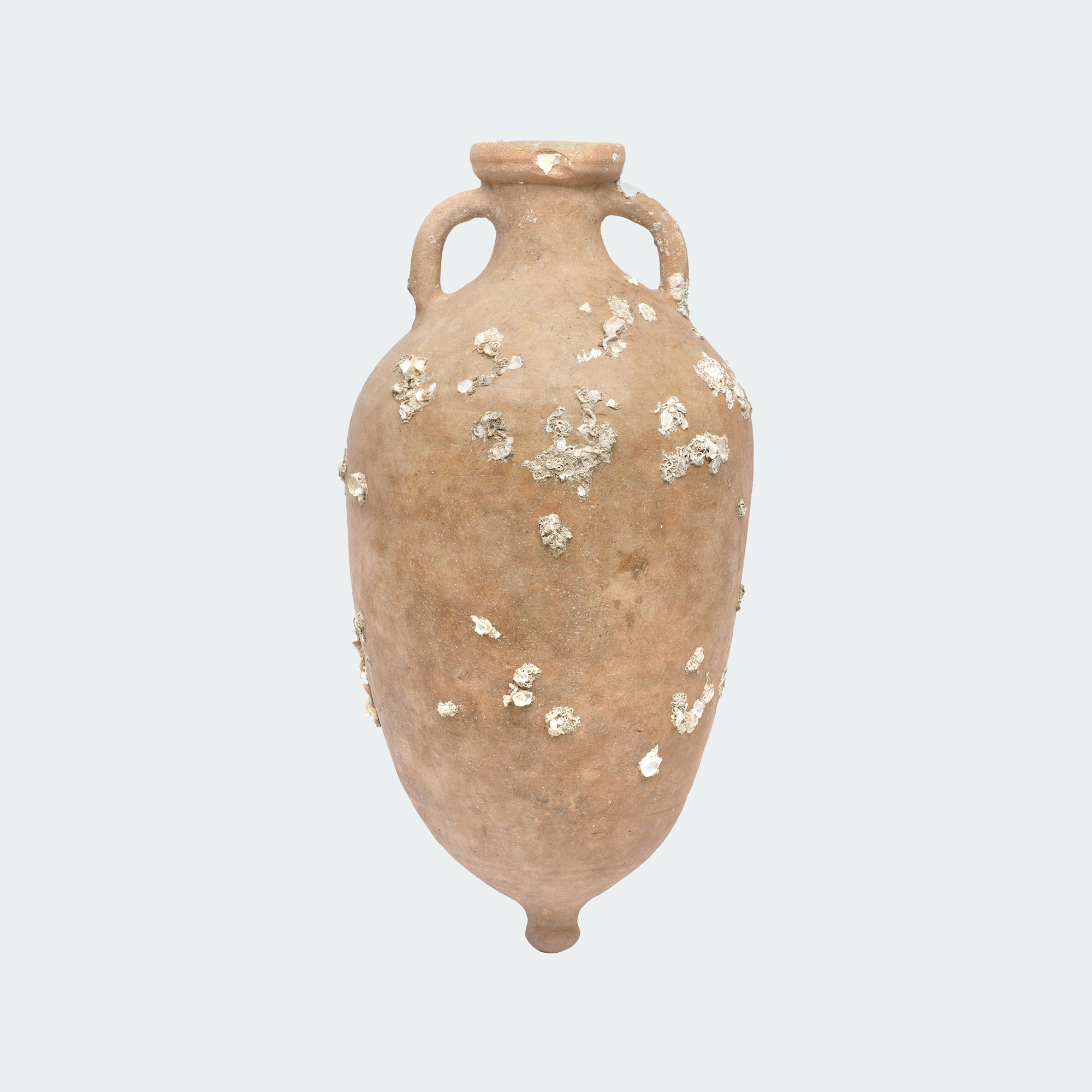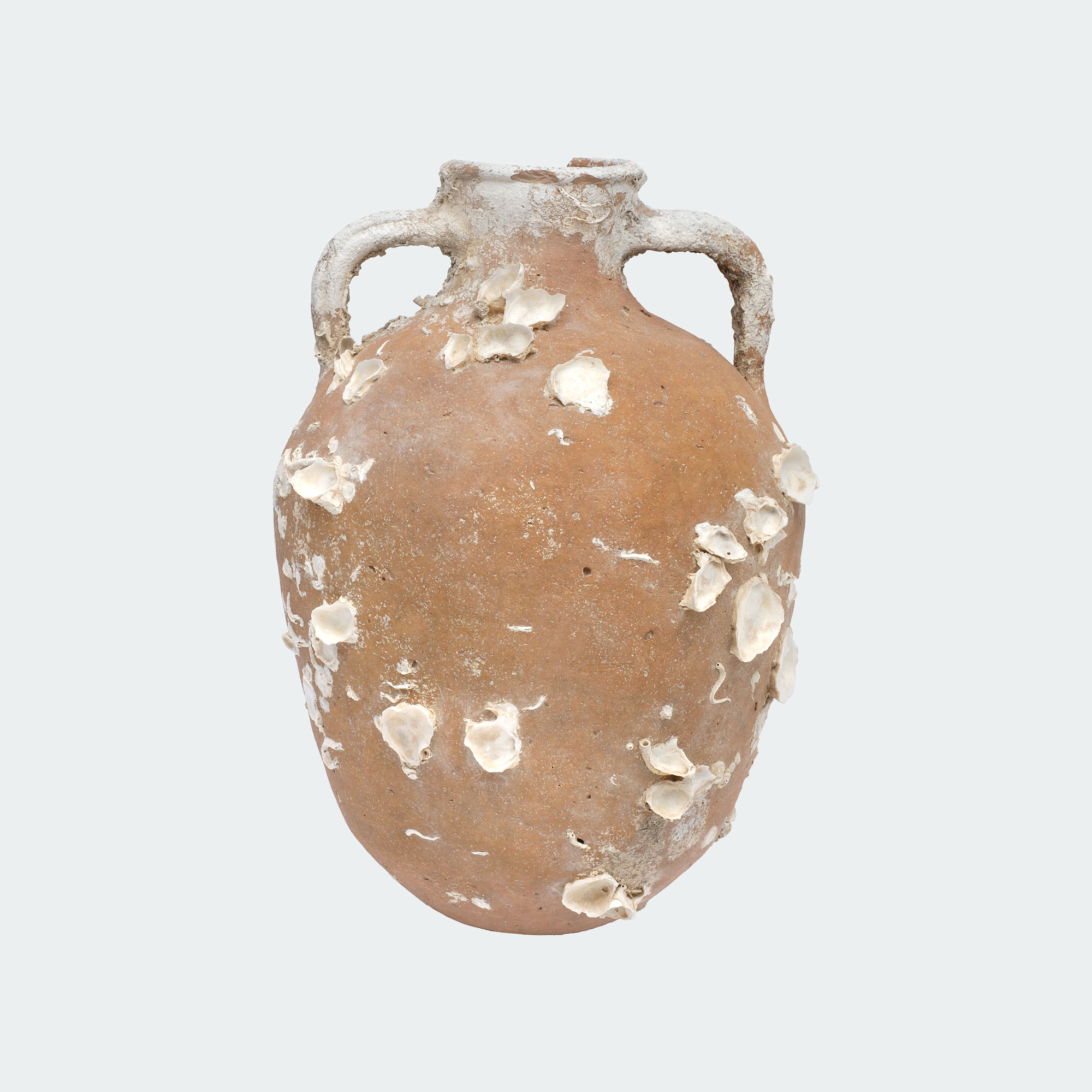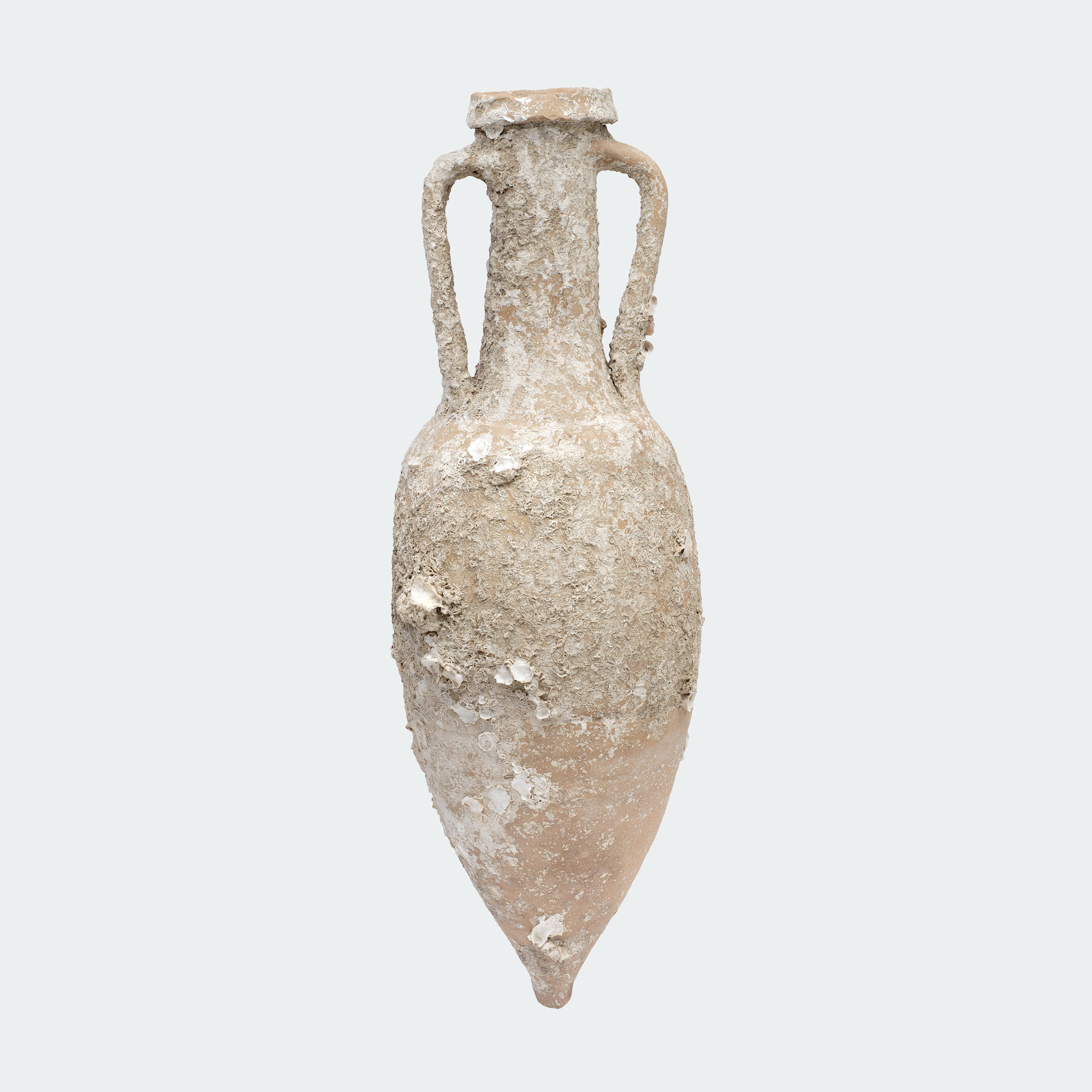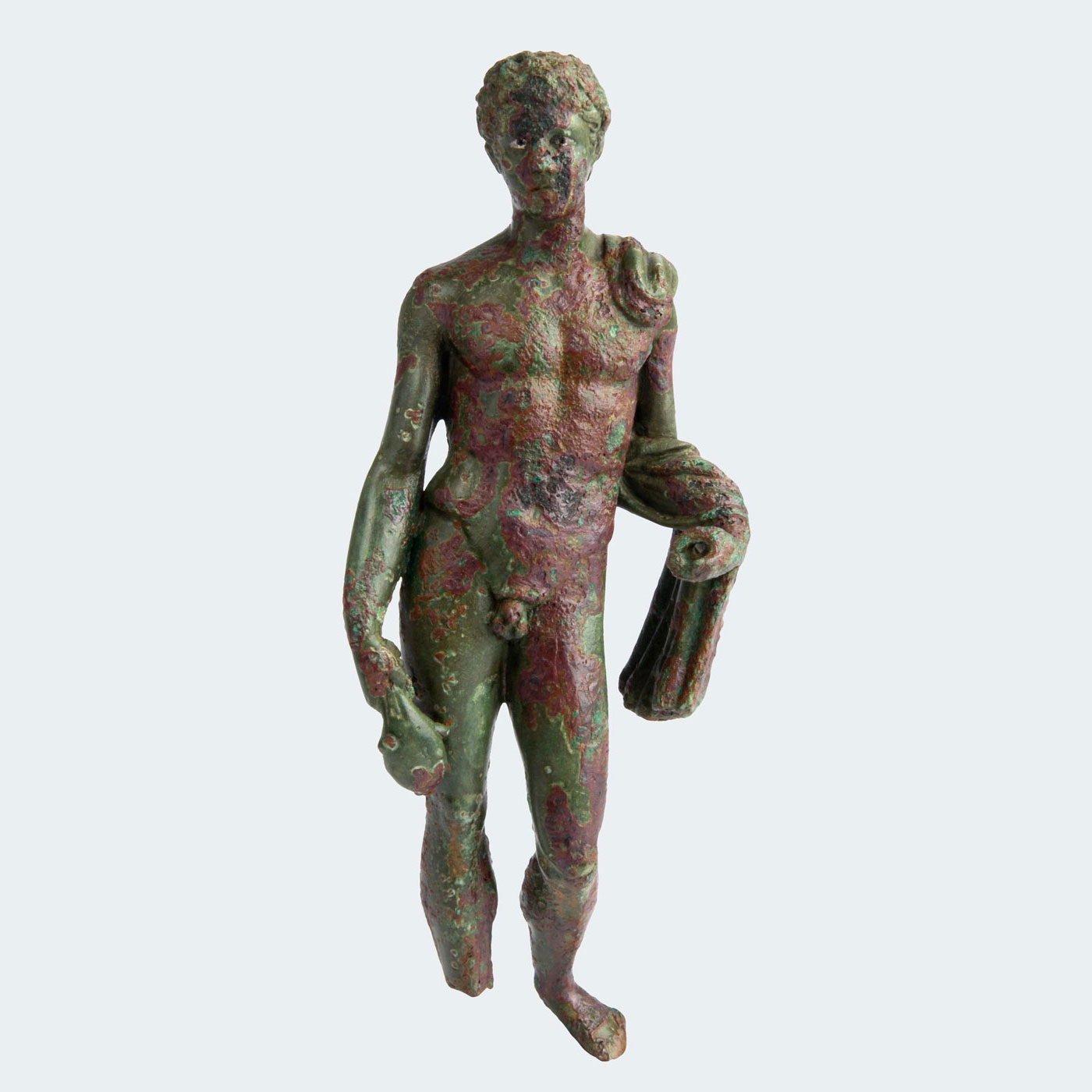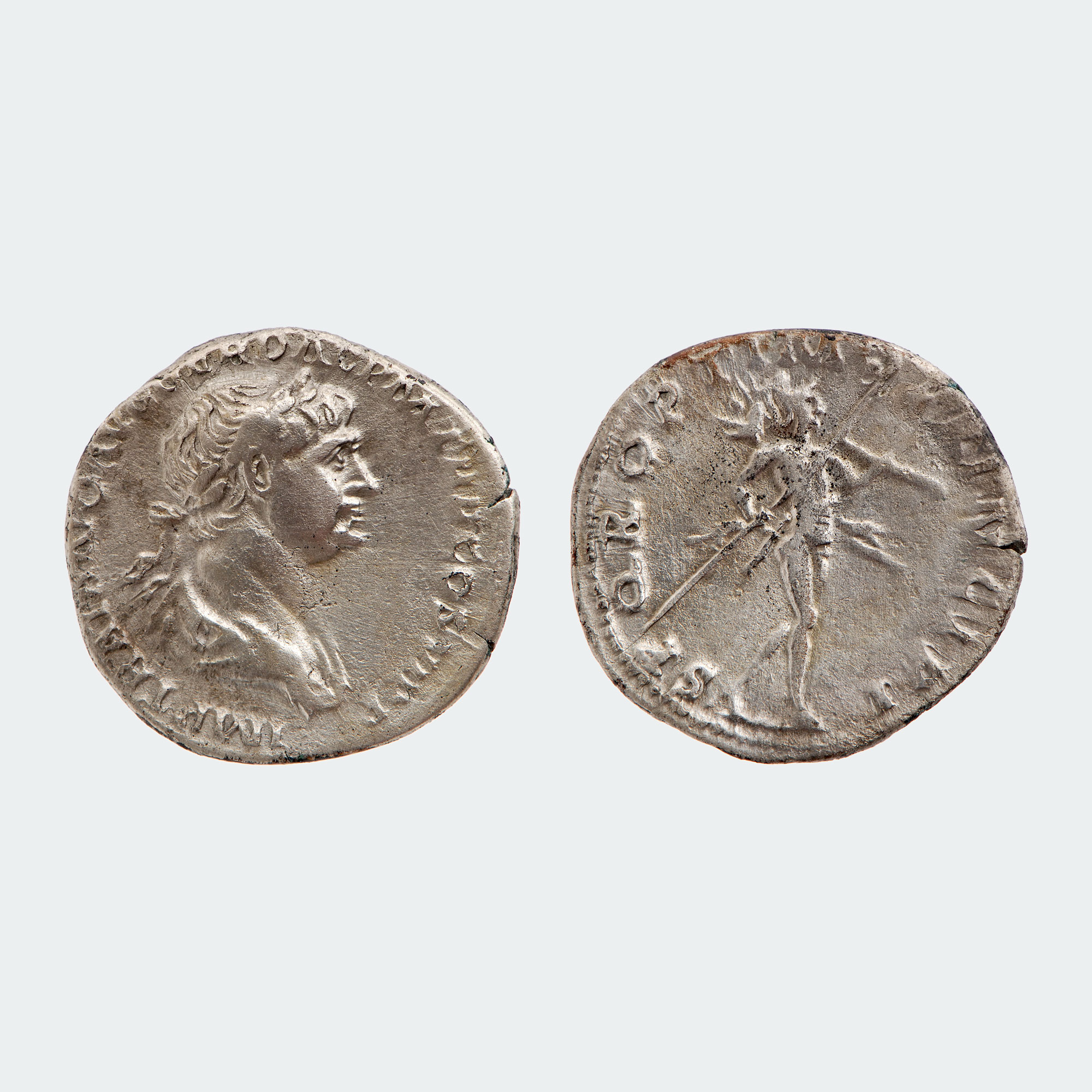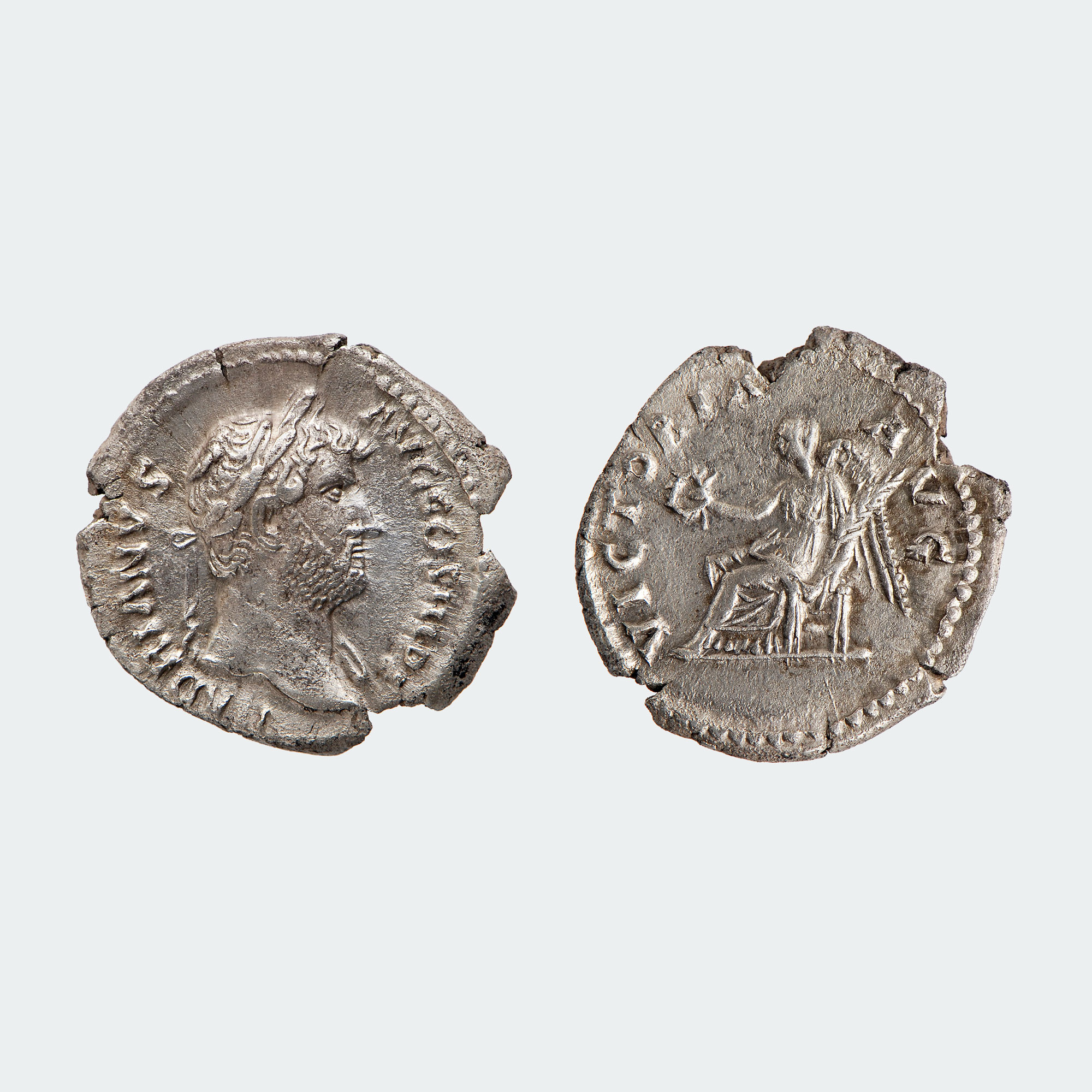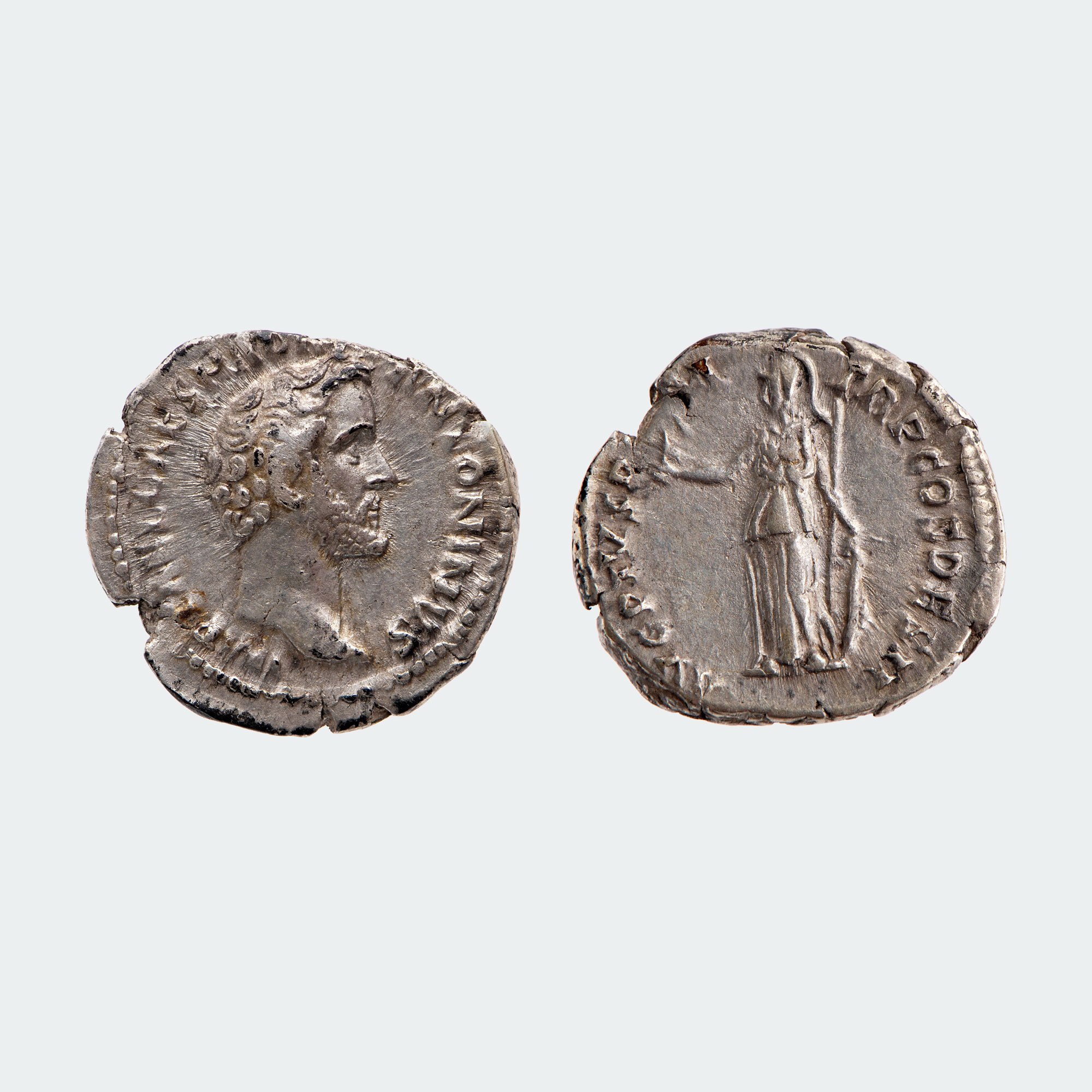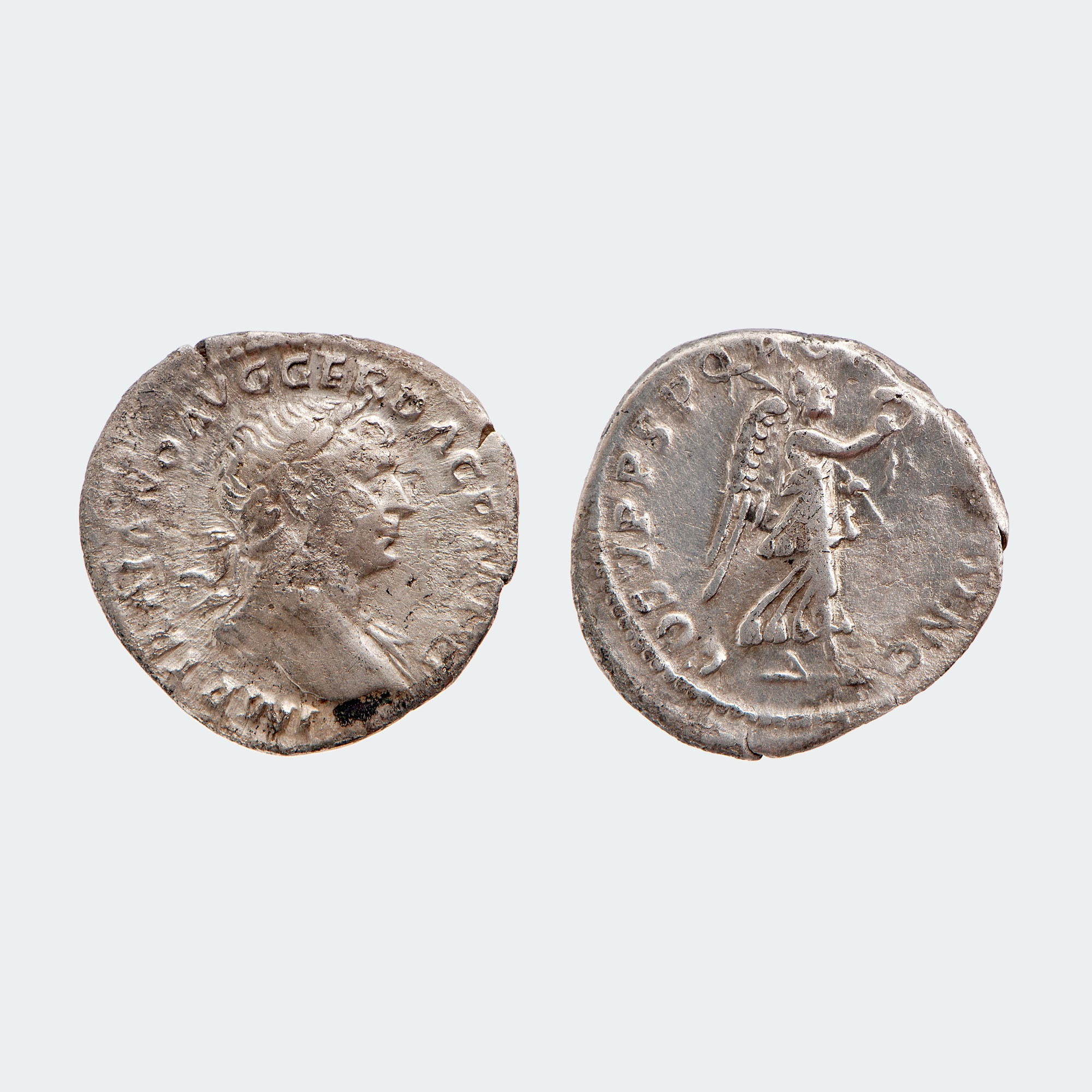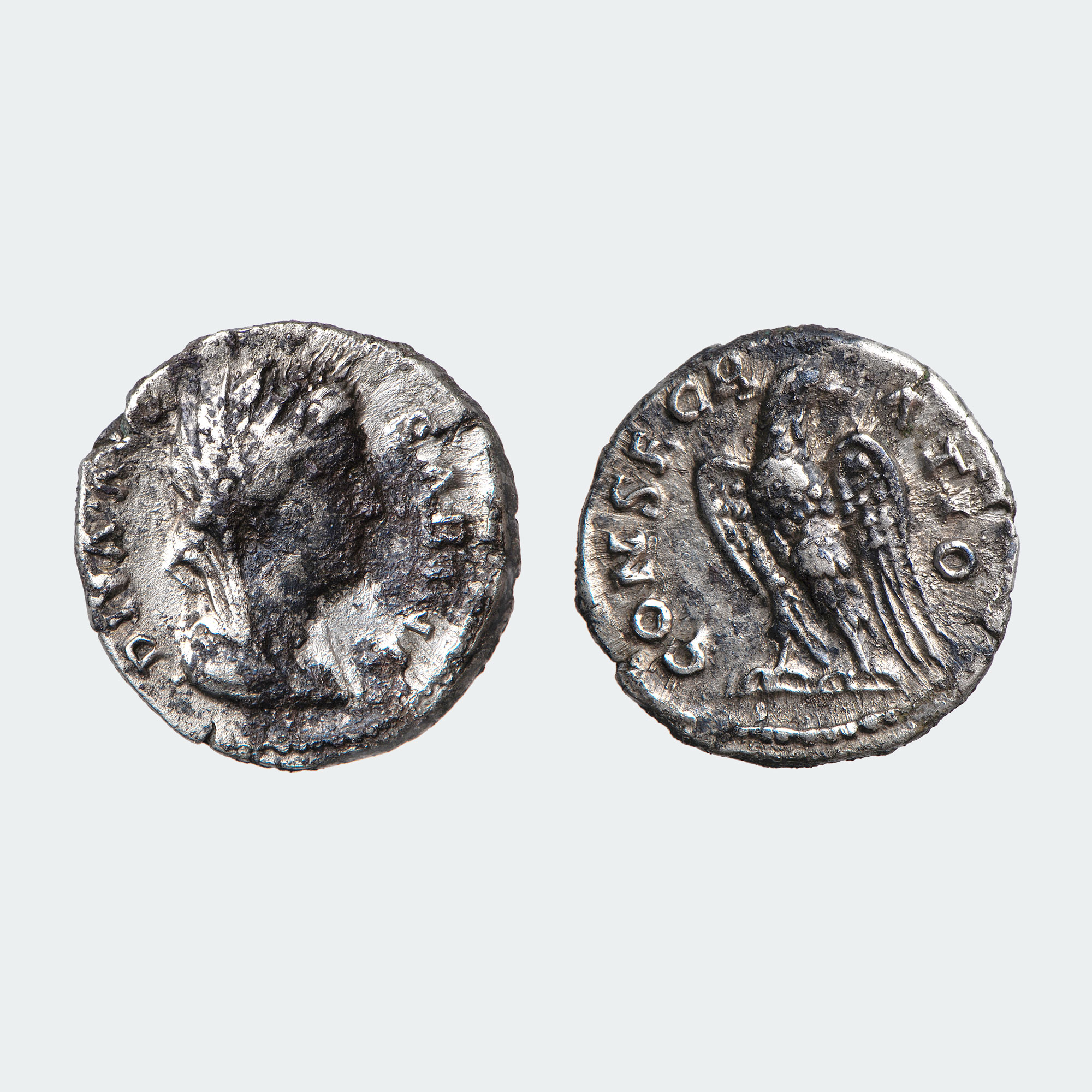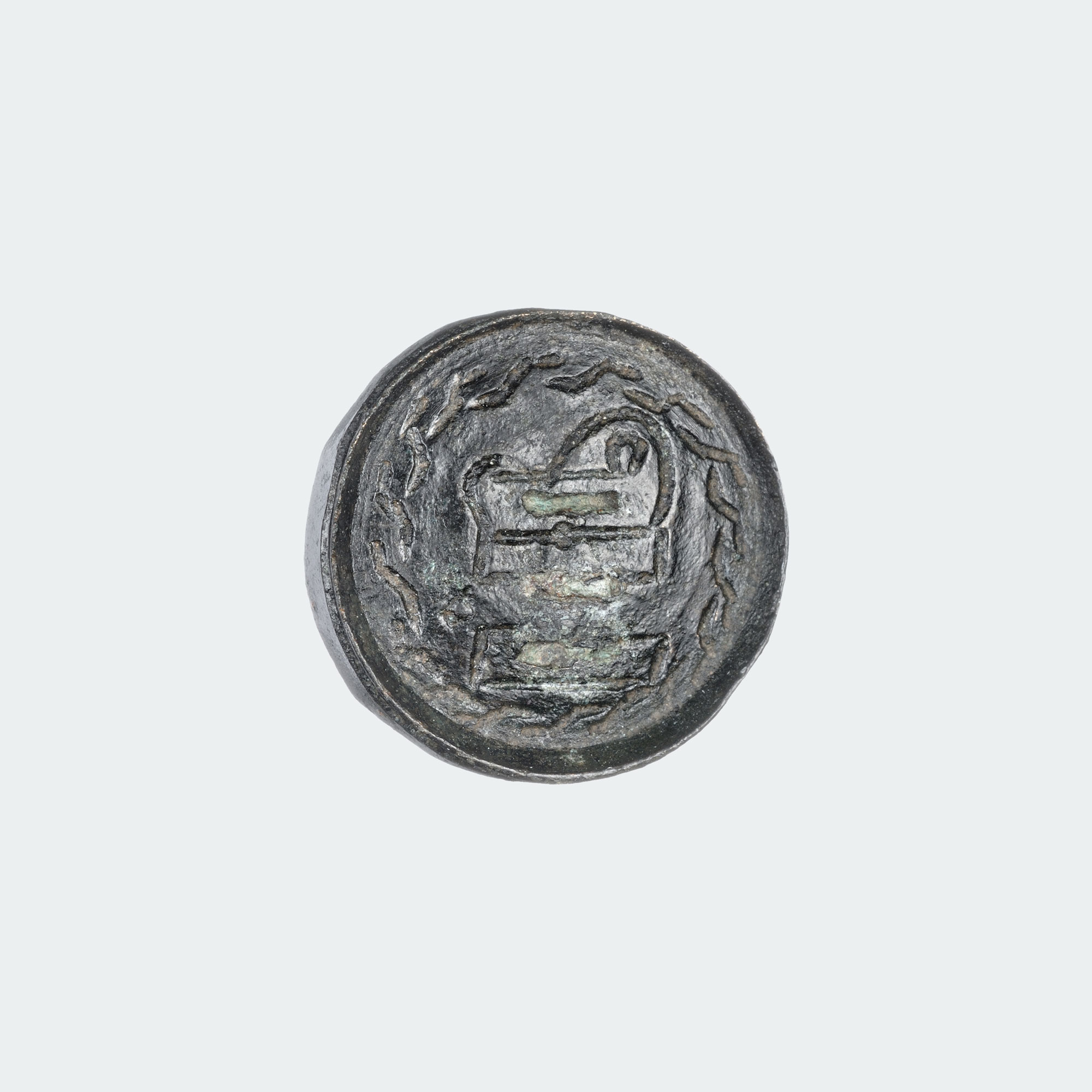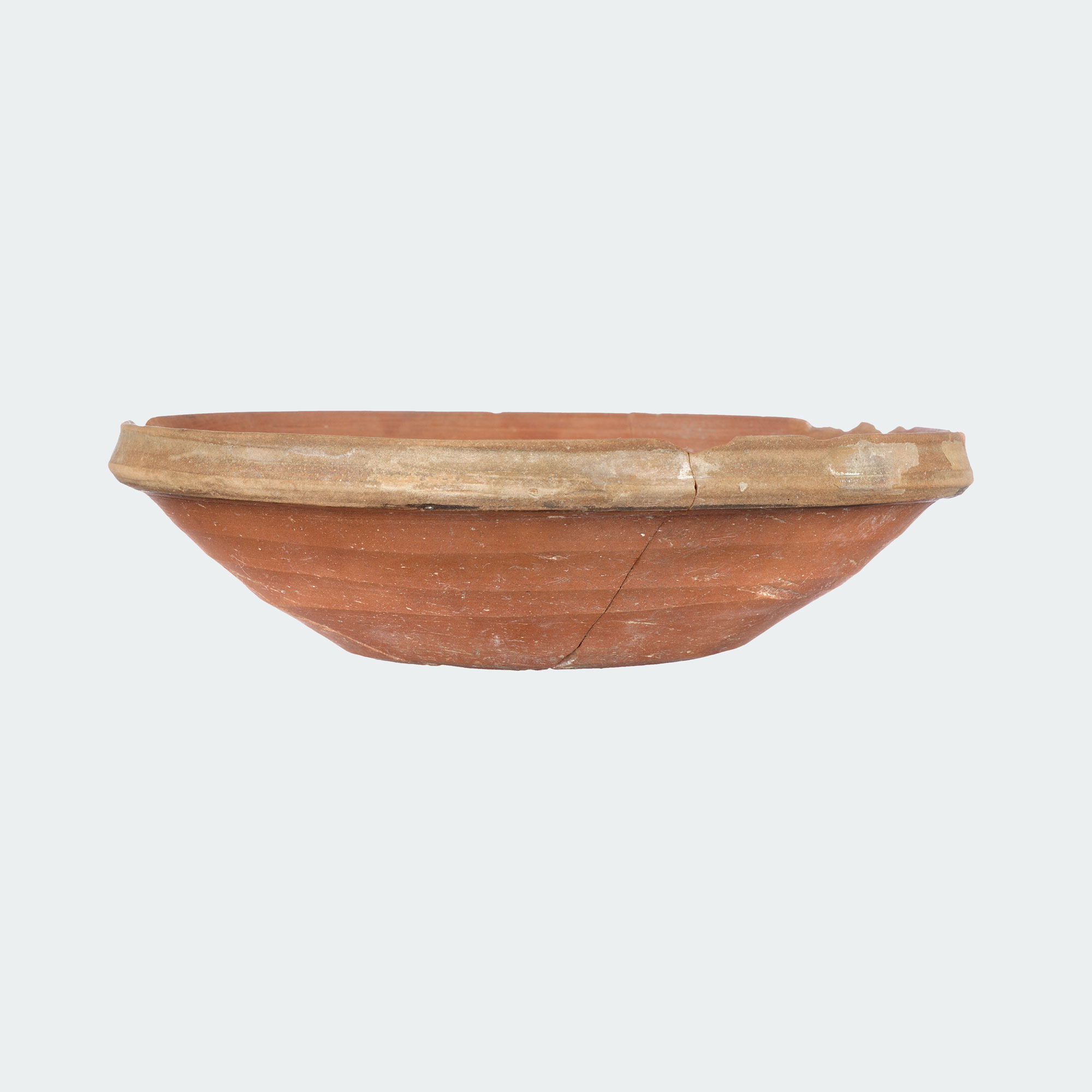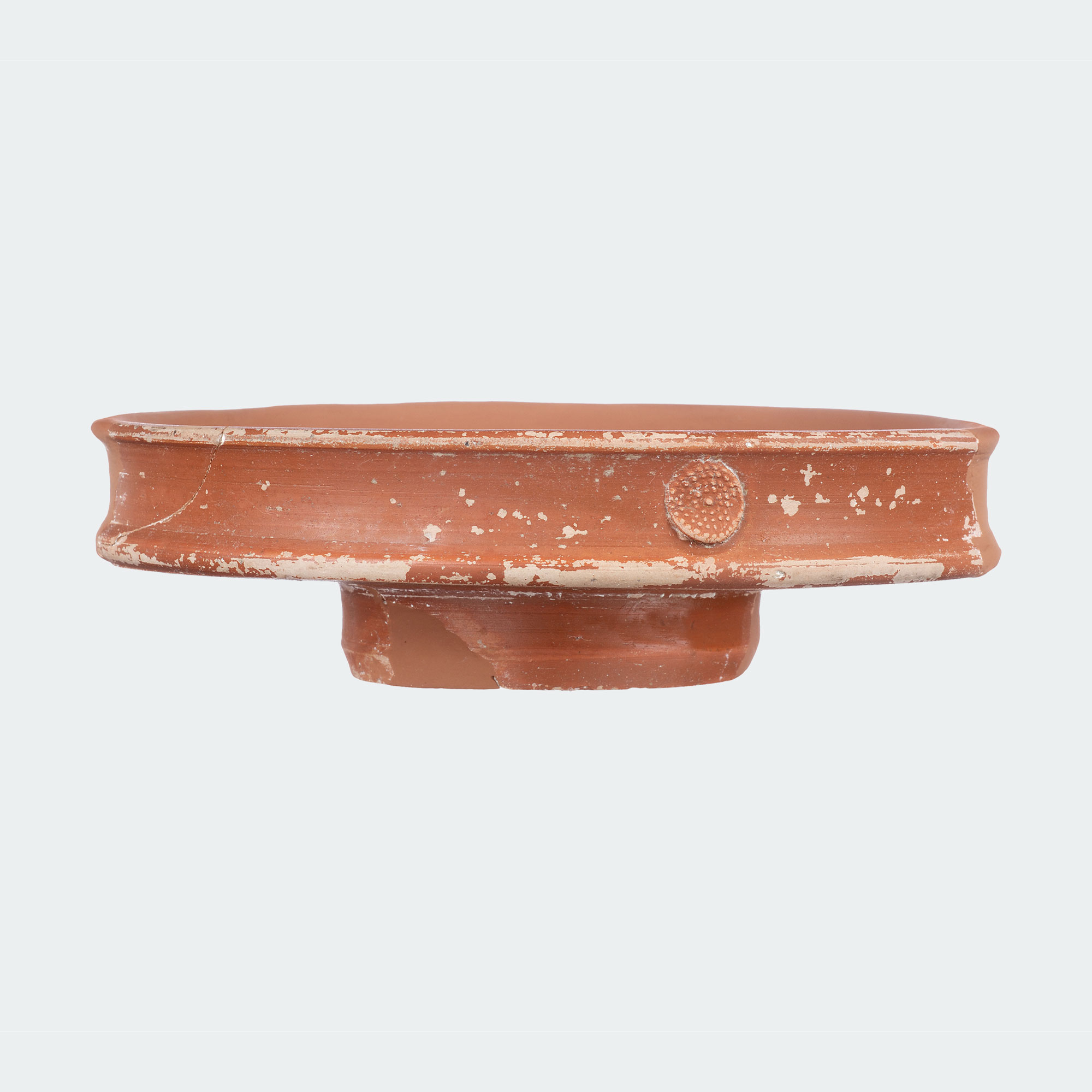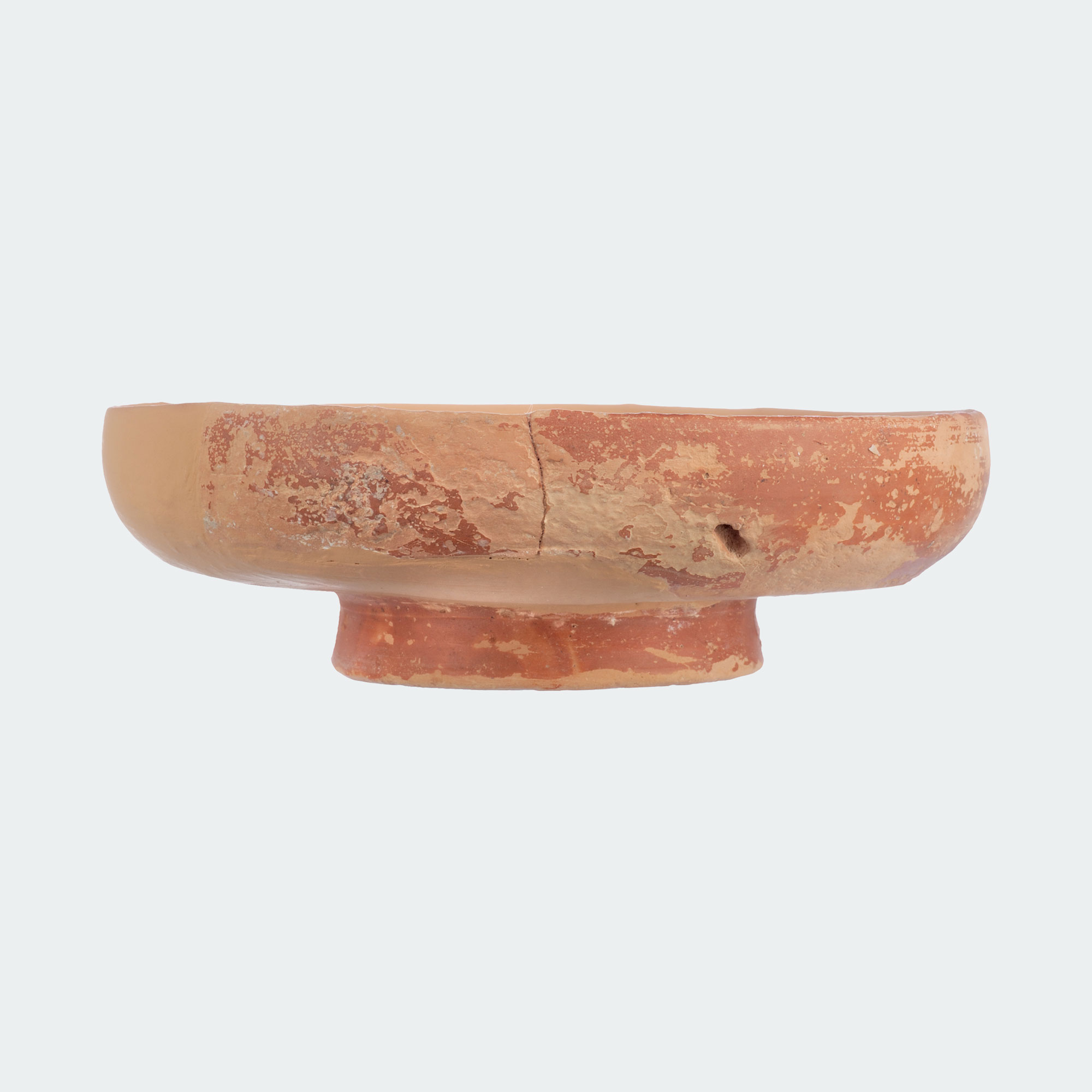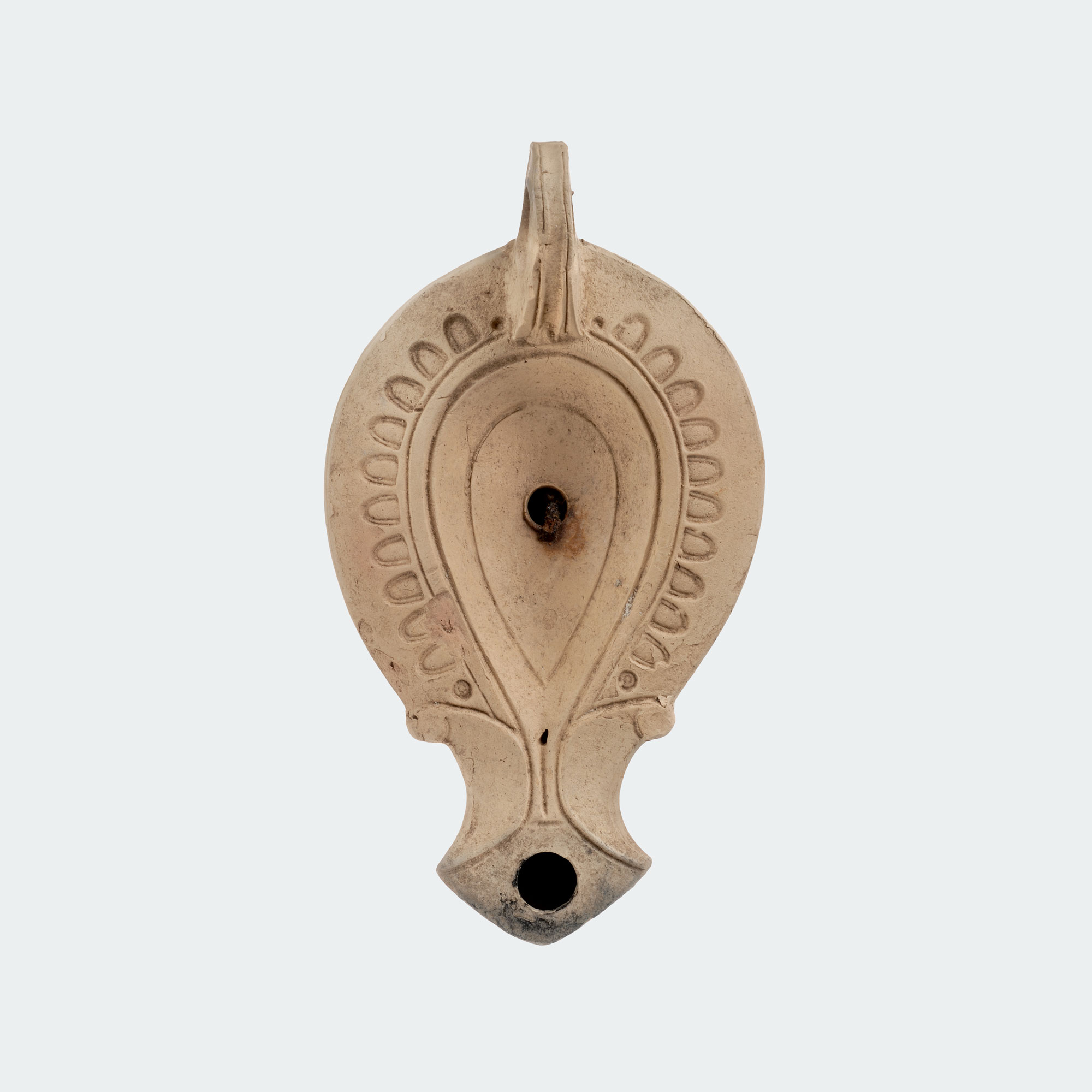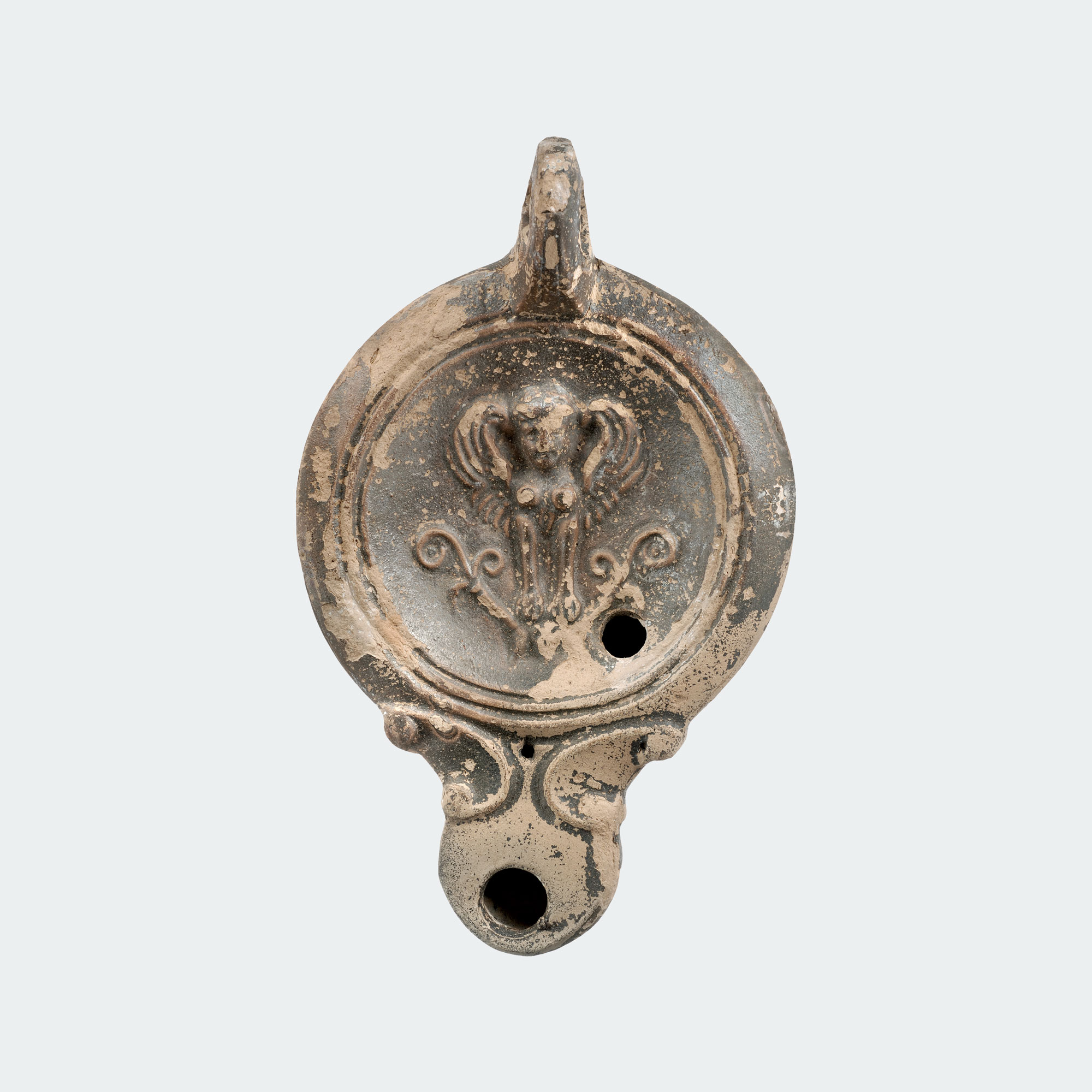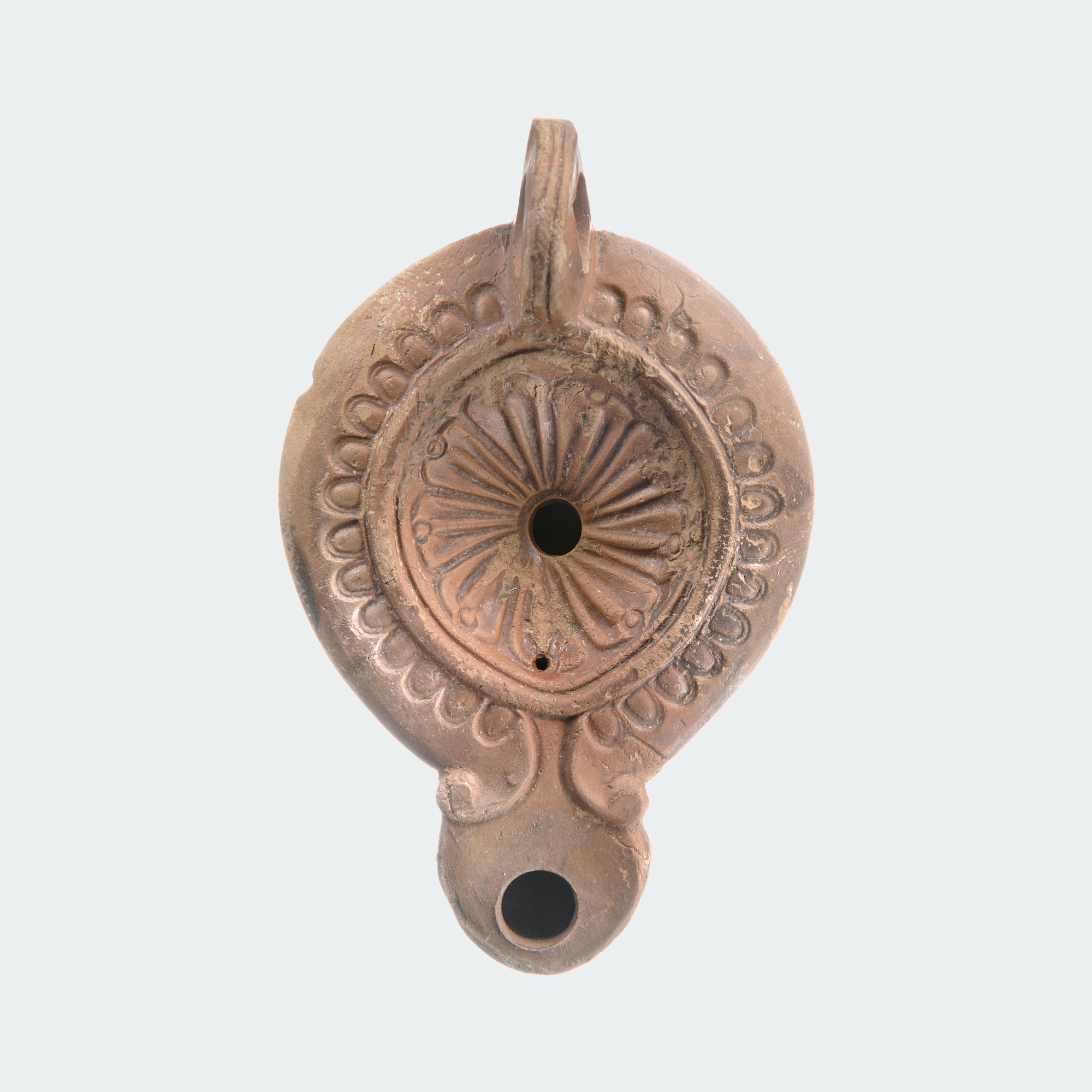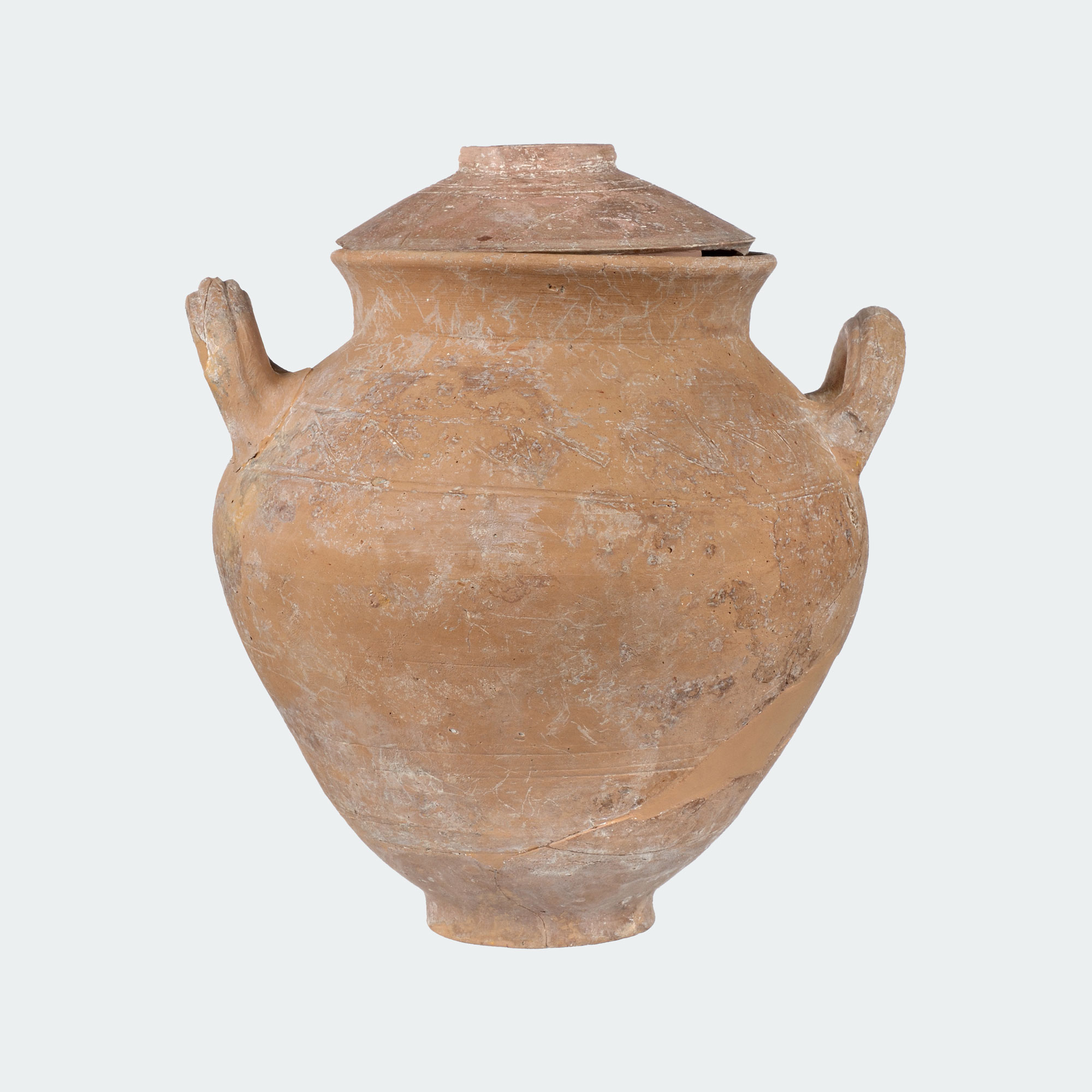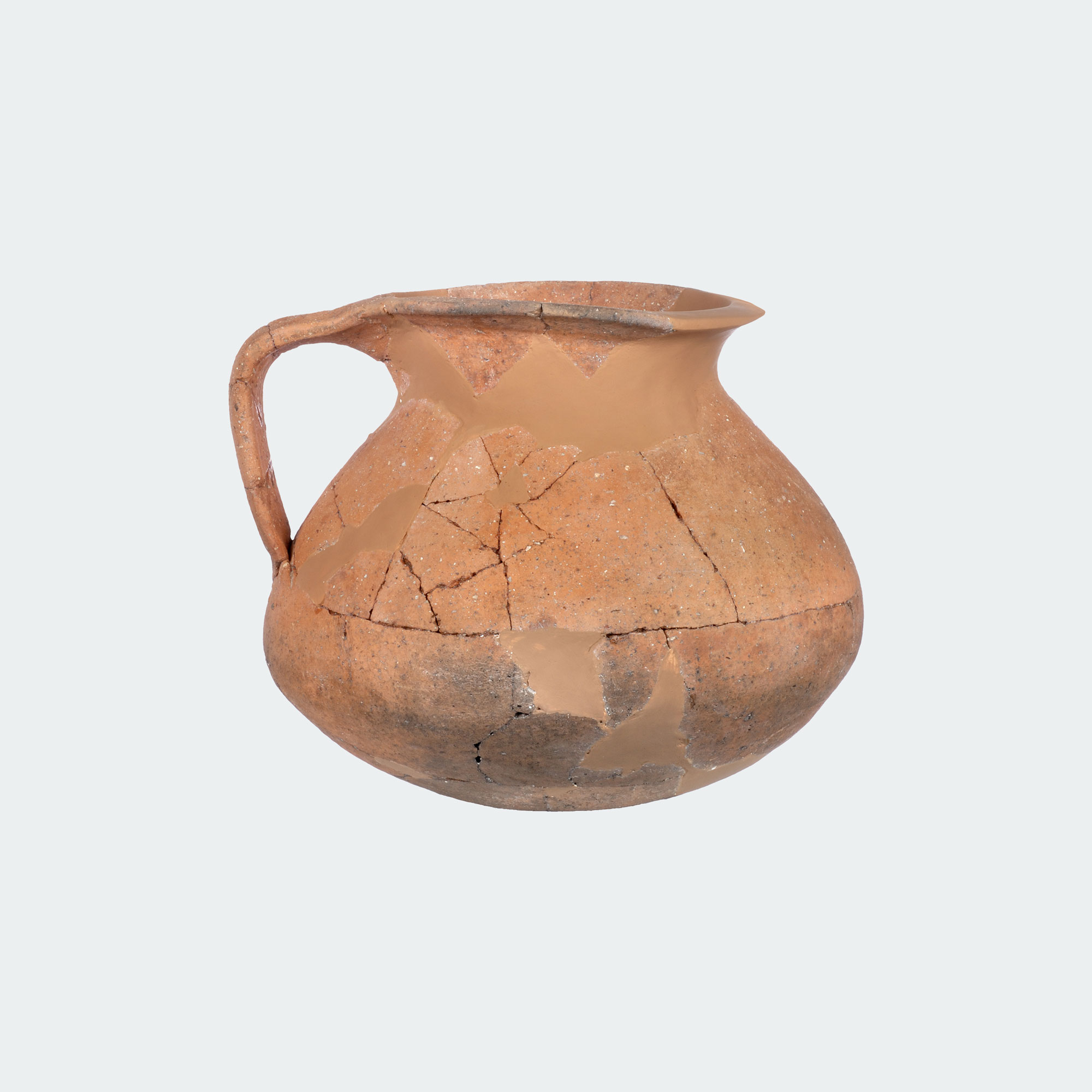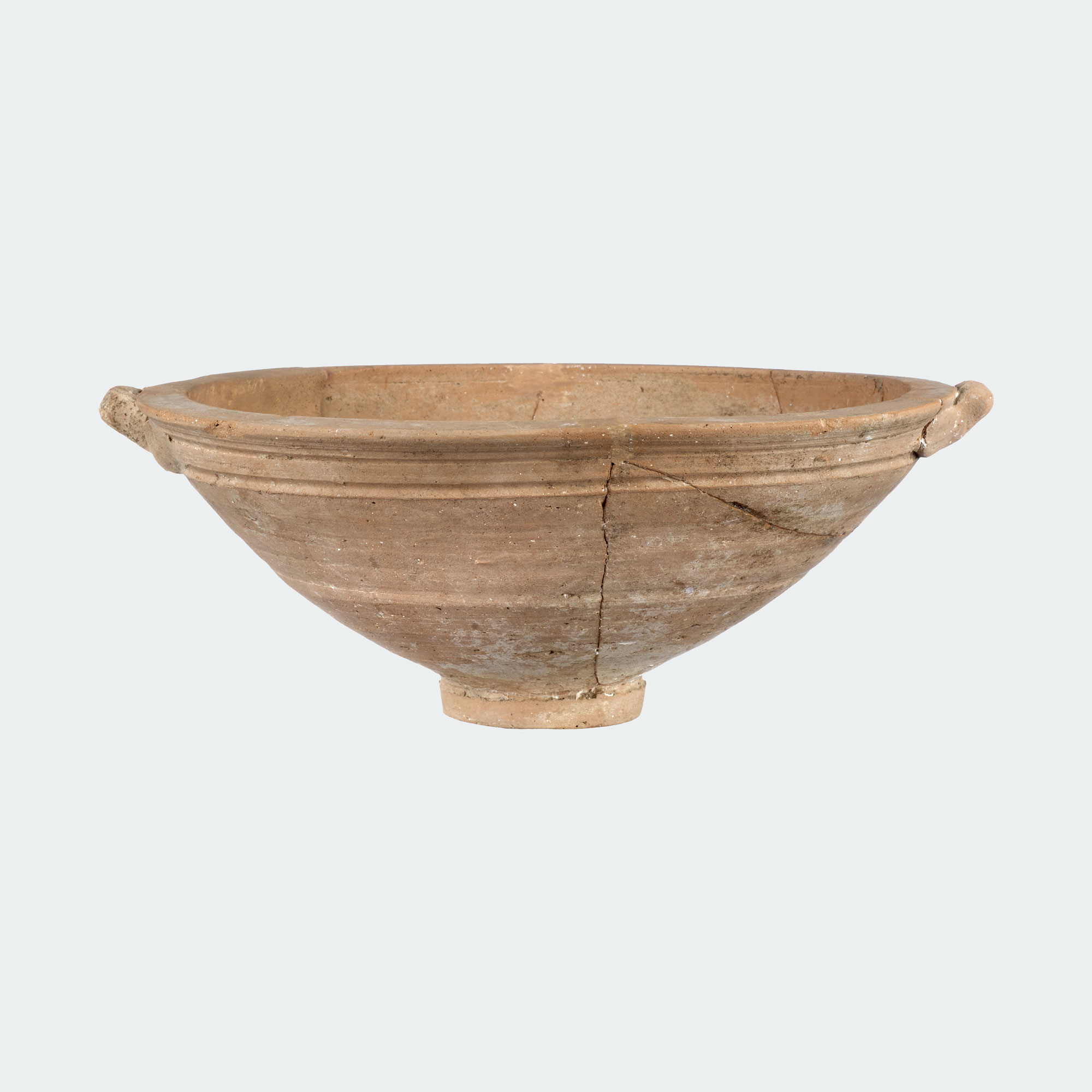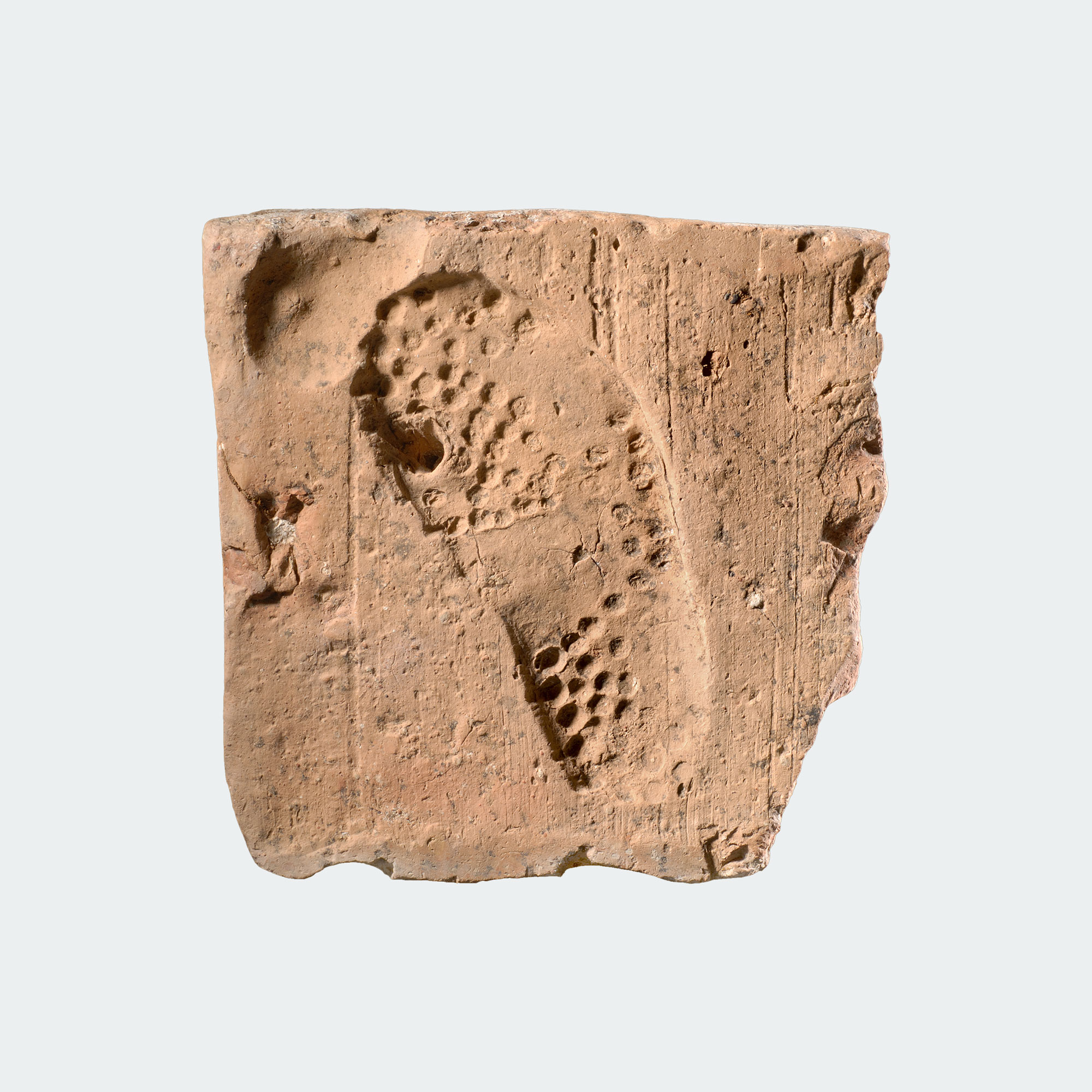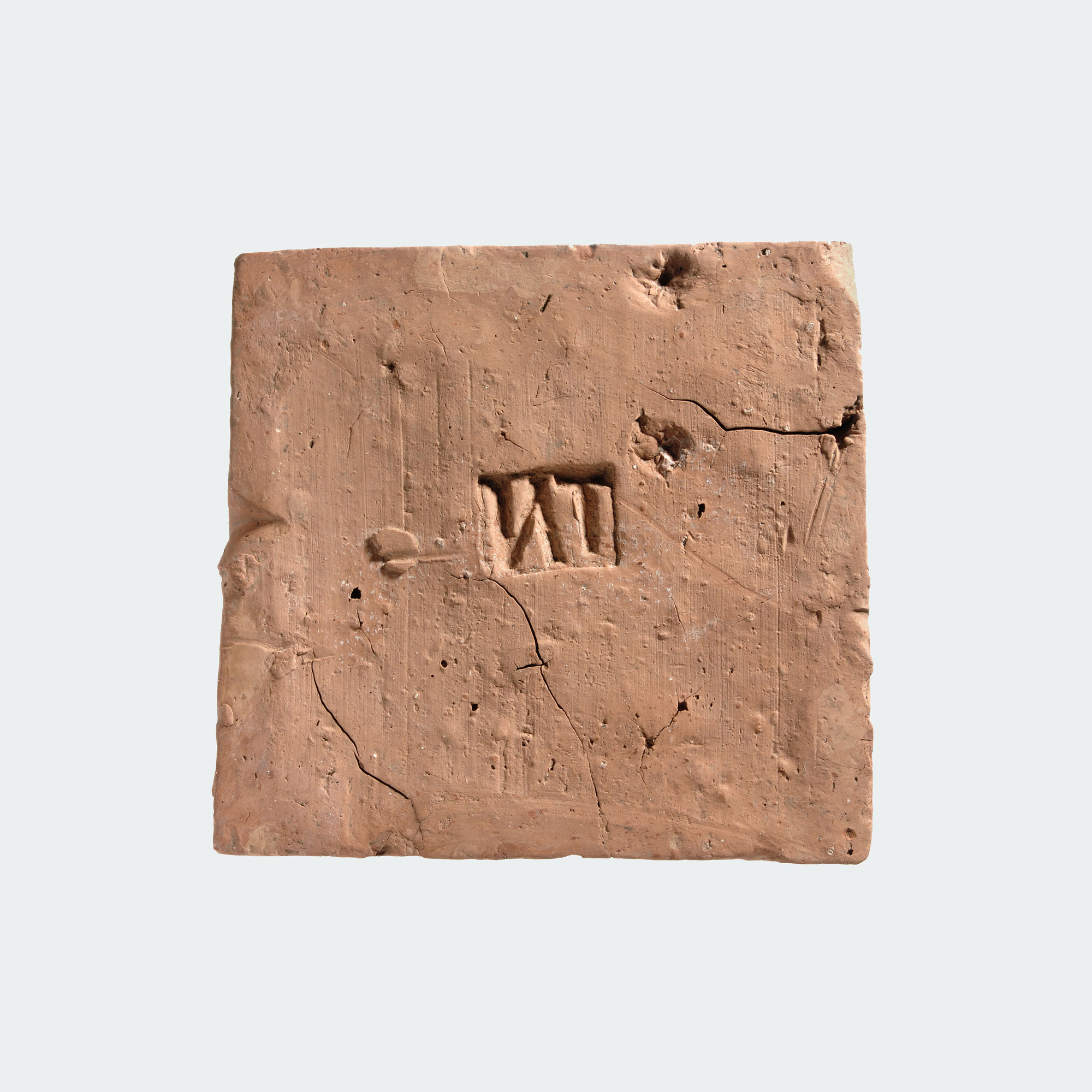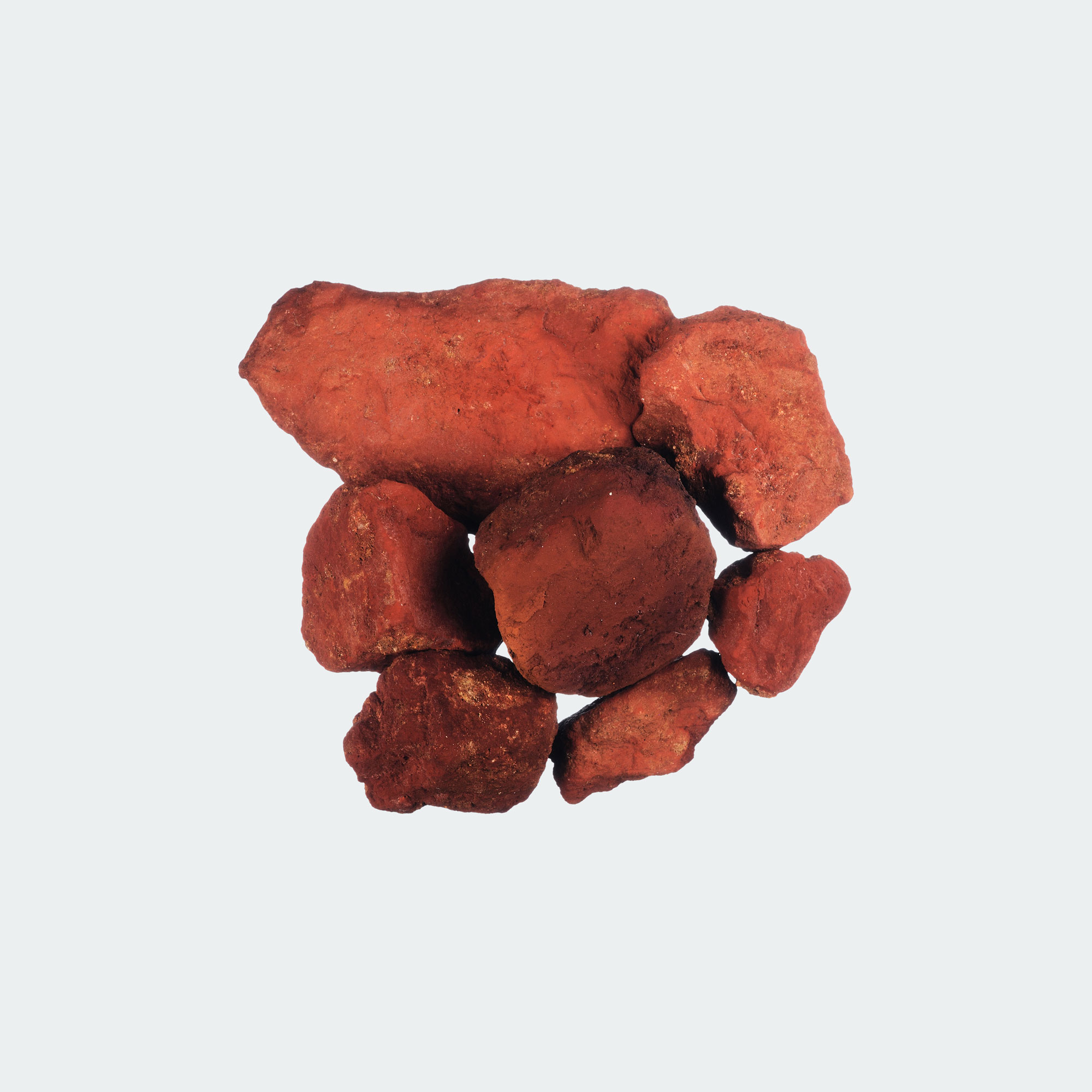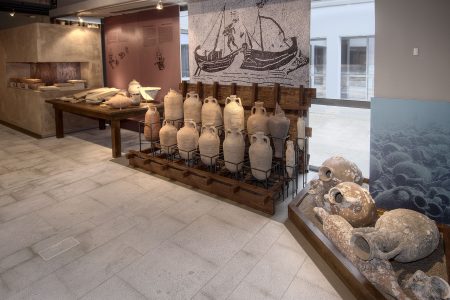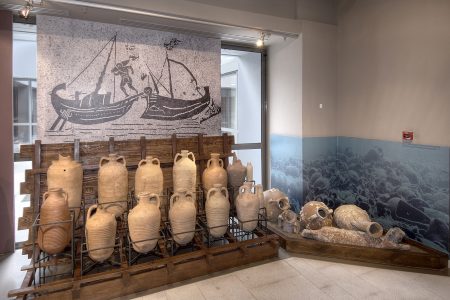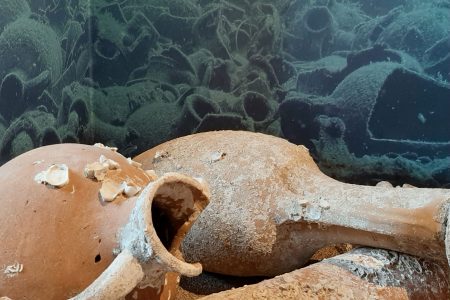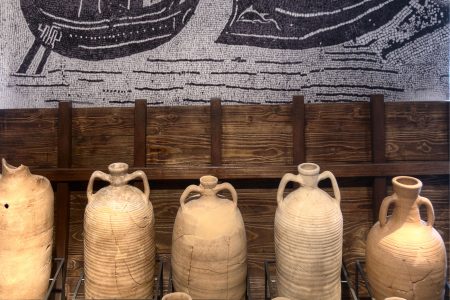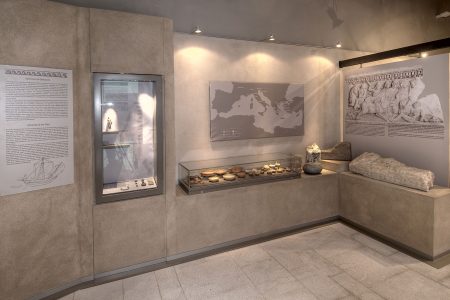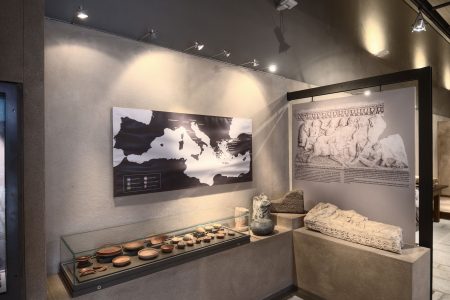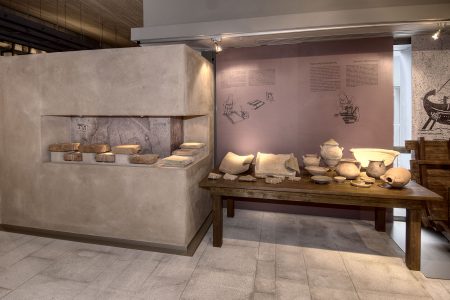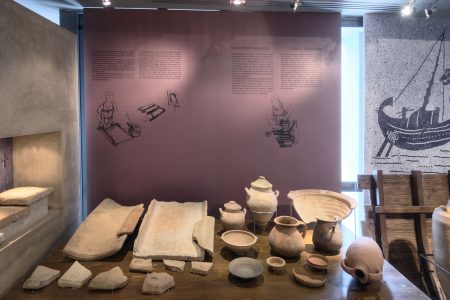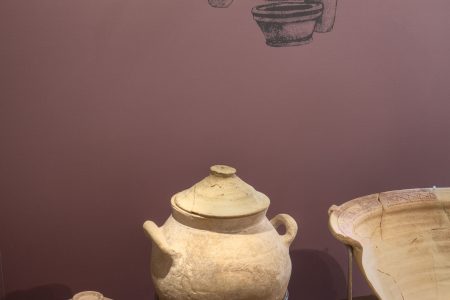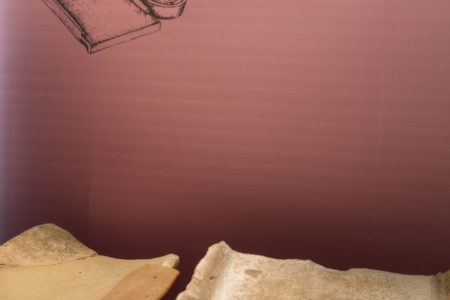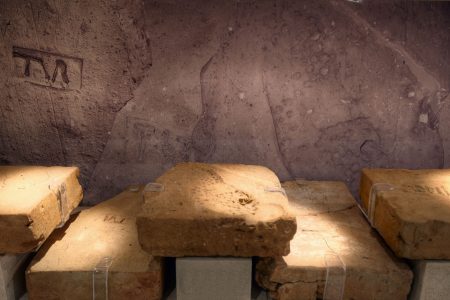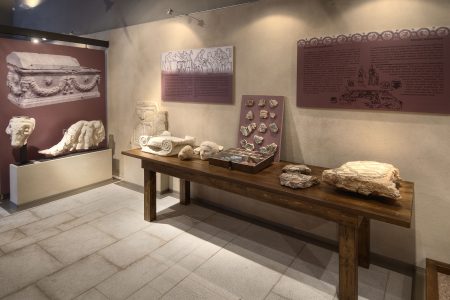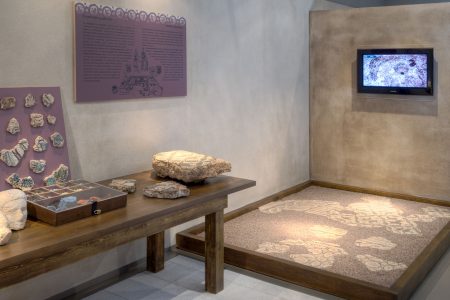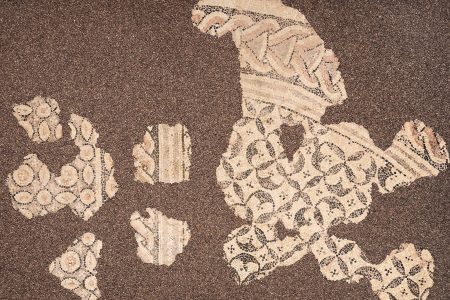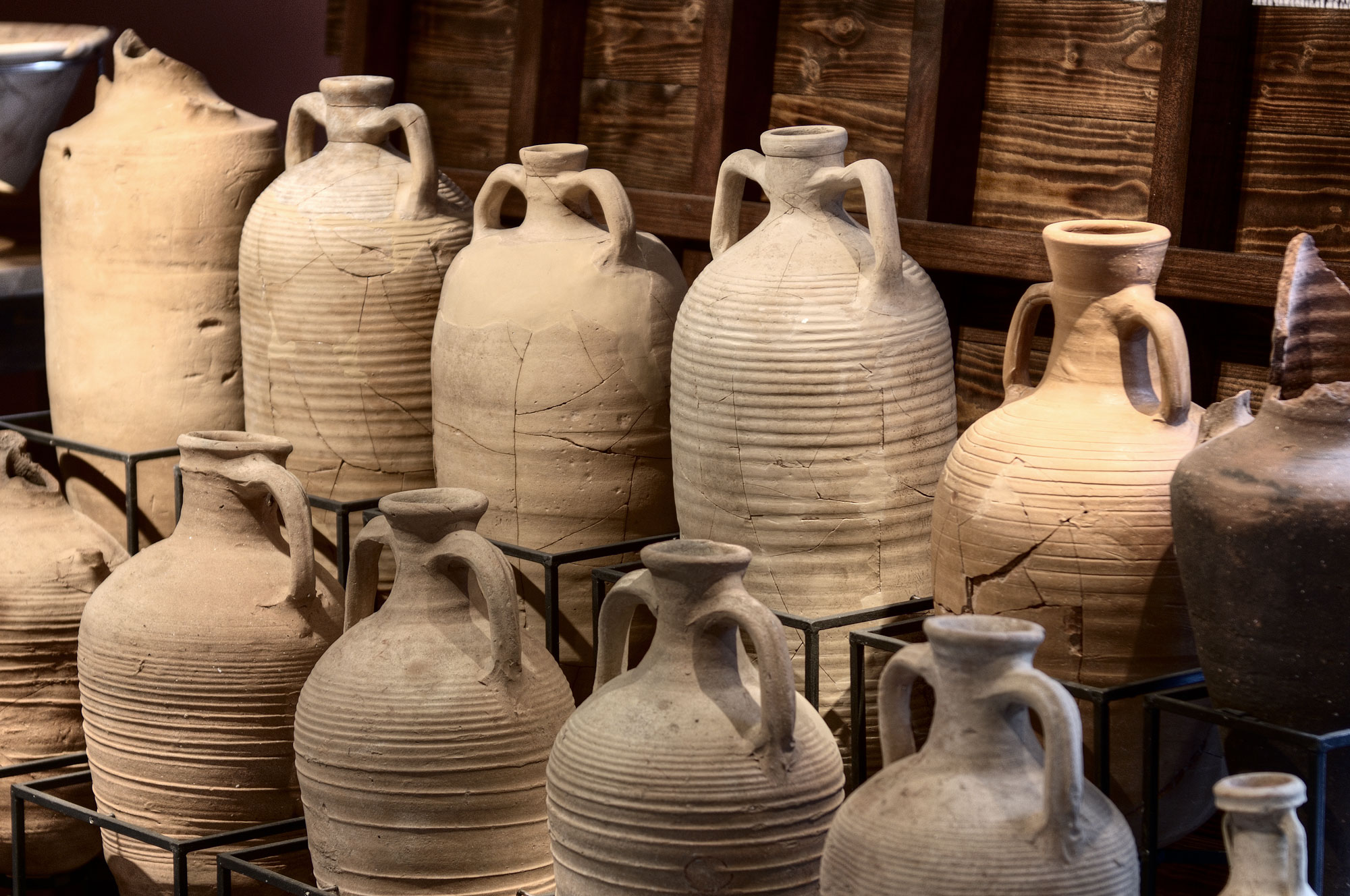
Trade and Economic Ventures
This section of the exhibition explores facets of daily life in Nicopolis, particularly in relation to the commercial and trade activities of its residents.
The city’s strategic location on the shores of the Ionian Sea, at the entrance of the Ambracian Gulf, and at the nexus of crucial roads leading to the continental hinterland shaped its evolution into a commercial and financial hub.
The exhibits offer insights into the city’s network of commercial connections, showcasing everyday items and luxury goods from Patras, Corinth, Athens, Italy, North Africa, Asia Minor, and Constantinople.


Amphorae on display bear witness to Nicopolis’ role in transshipment trade within the Ionian and Adriatic regions, as well as across the wider Mediterranean.
These large earthenware vessels, once stacked in the holds of ships, transported essential commodities such as grain, wine, oil, and salted fish. They have been unearthed not only within the city’s core but also in the broader port area and from shipwrecks along the coastlines.
While no specific excavations have been identified, it is widely believed that workshops operated in Nicopolis to primarily meet local demands.
Pottery workshops produced plinths, tiles, and cooking and tableware, distinguished by their clay composition, shapes, and decorative elements.
Stonework workshops, on the other hand, utilized local stones like limestone and sandstone, as well as imported marble. They excelled in crafting sarcophagi during Roman times and architectural sculptures in the early Christian era.
The exhibition also highlights the exceptional artistry of mosaic workshops, evident in the mosaic floors of Roman villas in Nicopolis, like the one displayed in the exhibit, and the early Christian basilicas.
